What Are Lifepo4 Batteries? - The Most Complete Guide

Lithium iron phosphate (LiFePO4) batteries are becoming increasingly popular in the energy storage market for a variety of applications. With their ability to provide high power, a long life cycle, and excellent safety features, LiFePO4 batteries offer users many advantages over traditional lead-acid batteries.
As advances in technology continue to improve the performance of LiFePO4 battery cells, it is important to understand what these batteries are and how they can be used. By providing an overview of this technology and its benefits, we can begin to appreciate just how powerful these energy storage solutions can be.
I believe that after reading this article, you will immediately understand whether the expensive lifepo4 battery is worth your investment.
Key Takeaways:
- LiFePO4 batteries offer high power and a long life cycle, superior performance, and improved safety compared to other rechargeable batteries.
- They are used in a variety of applications such as electric vehicles, solar applications, medical devices, and backup power supplies.
- LiFePO4 batteries have low self-discharge rates, higher power densities, longer lifespan, and lower overall operating costs compared to other battery types.
- However, they require a Battery Management System (BMS) and proper understanding and implementation of LiFePO4 BMS reset is essential to prevent potential failures.
Lifepo4 Battery Market Overview

The Lifepo4 battery market is rapidly expanding due to its increased efficiency and performance when compared to other types of batteries. The LiFePO4 (Lithium Iron Phosphate) battery has become a popular choice for many applications because it offers a range of advantages over traditional lead acid batteries in terms of lifecycle, safety, and cost.
The advantages of lithium iron phosphate batteries are high power density, low self-discharge rate, thermal damage resistance, small heavy load voltage droop, and wide operating temperature range.
In addition, the price of lithium iron phosphate batteries has dropped significantly in recent years, making them more accessible than ever. And these batteries last much longer than lead-acid batteries, up to 10 times longer than lead-acid batteries when properly cared for.
Taken together, these properties make them ideal for use in electric vehicles such as scooters and cars, as well as solar applications such as off-grid systems or home energy storage systems. Other common applications include medical equipment, backup power for computers or servers, toys, and consumer electronics.
Understanding Lifepo4 Battery Technology
Leveraging the power of modern technology, Lifepo4 battery technology stands as a shining beacon of renewable energy, illuminating a path to sustainable progress like a lighthouse in an otherwise darkened sea. This advanced lithium-ion battery system is designed with durability and performance in mind, offering significant advantages over other rechargeable batteries.
| Project | Parameters |
|---|---|
| Positive pole | Iron phosphate |
| Negative pole | Graphite |
| Energy density | 140 Wh/L (504 kJ/L) to 330 Wh/L (1188 kJ/L) |
| Specific energy | 90 Wh/kg (> 320 J/g) – 160 Wh/kg (580 J/g) |
| Power energy | 100-130 W/kg |
| Lifespan | 10-20 years |
| Cycle life times | Cycle lifetimes |
| Nominal cell voltage | 3.2-3.3 V |
| Minimum discharge voltage | 2.5 V |
| Charge time | 1-8 hours |
| Operating temperature range | -20°C to 60°C |
| High-temperature performance | Better |
| Low-temperature performance | Not good |
| Self-discharge rate | 1-3% per month |
| Depth of discharge | 80%-100% |
| Safety | Great |
| Toxicity | Non-toxic |
| Environmental impact | Friendly |
Lifepo4 Battery Advantages
Lithium Iron Phosphate (LiFePO4) batteries are a type of rechargeable battery that has been gaining popularity due to their numerous advantages. These include an extended lifespan compared to other battery technologies, high energy density, wide operating temperature range, exceptional safety standards and maintenance-free operation.
LiFePO4 batteries provide a viable solution for many applications where long-term reliability and performance are required.
(1) Long lifespan
Lifepo4 batteries are renowned for their long life cycles compared to other chemistries. Generally, the lifespan of lifepo4 battery is 3000-5000 charge and discharge cycles, this is significantly longer than the 400-1000 cycle lifespan of Lithium Ion batteries. In addition, Lifepo4 battery capacity does not degrade as quickly over time. After around 3000 cycles, you can expect only a 5% reduction in its capacity. On the other hand, traditional lithium-ion batteries exhibit more significant reductions in capacity after 500 charge/discharge cycles - up to 30%.
Looking at the table below provides a better understanding of how lifepo4 compares with other rechargeable battery chemistries:
| Battery Chemistry | Cycle Count | Capacity Retention At 500 Cycles |
|---|---|---|
| Lead Acid | 250 | 75% |
| NiCd | 350 | 50%-60% |
| LiIon | 400-1000 | 70%-80% |
| LiFePo4 | 3000-5000 | 100% |
(2) High energy density

The high energy density of Lifepo4 batteries is akin to a compact piece of luggage that can store an immense amount of items. This type of battery has a higher storage capacity compared to traditional lithium-ion batteries, allowing it to provide more power for longer periods of time.
From this, it can also be roughly judged what are lifepo4 batteries used for, including powering heavy-duty vehicles and machinery that require large amounts of energy output over long periods. This makes them ideal for applications where continuous, reliable power is necessary.
Lifepo4 battery manufacturers have developed the technology further by adding additional features such as advanced safety measures, increased durability, and improved charging efficiency when compared to traditional lithium iron phosphate battery disadvantages. The improved performance allows these batteries to be used in a variety of applications such as medical devices or electric vehicles with greater reliability and confidence than ever before.
As lifepo4 continues to evolve in terms of technology and safety standards, it will become increasingly attractive to consumers looking for long-lasting and powerful solutions from their battery suppliers.
(3) Wide operating temperature range
One of the major advantages of lifepo4 batteries is their wide operating temperature range, which allows them to be used in a variety of applications. This includes extreme temperatures both high and low: -20°C to 60°C. Their ability to function within this wide range provides several benefits:
- Lifepo4 batteries have excellent cycle life in most climates due to not being affected by extreme temperatures;
- They are capable of fast charging even in cold climates;
- The longevity of their performance is increased as they are not subject to thermal runaway due to overheating;
- A consistent level of power delivery is maintained throughout their lifespan;
- And, they have lower self-discharge rates than other battery types.
Due to these features, Lithium Iron Phosphate (Lifepo4) batteries can be used for a variety of purposes such as powering electric vehicles or storing electrical energy from renewable sources like solar and wind.
(4) High security
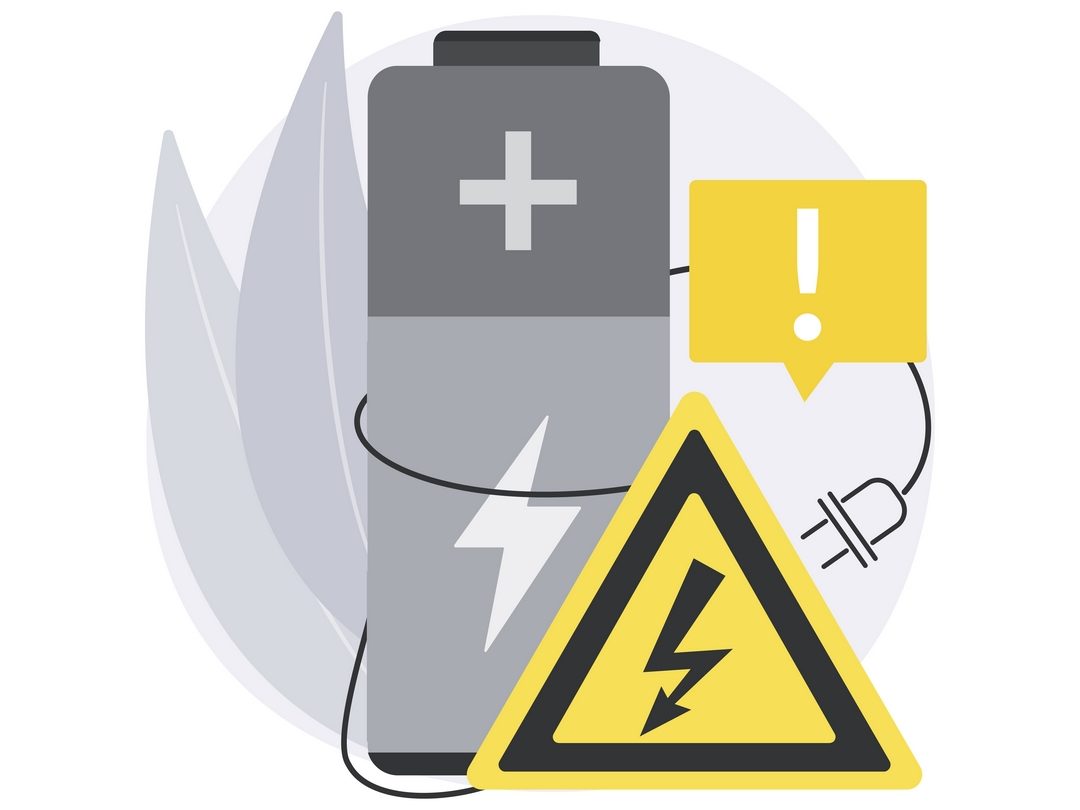
Boasting increased safety levels compared to other battery types, Lifepo4 batteries provide a reliable and secure source of energy for various applications. The Lithium Iron Phosphate (LiFePO4) chemistry of the battery reduces the risk of explosions or fire due to overcharge, short-circuit, or external heat sources. This type of battery is designed with several layers of protection circuits that detect any irregularities in operation and shut down the system if necessary.
Furthermore, it is able to operate at a wide range of temperature extremes without any performance degradation. In addition, these batteries have an excellent cycle life which makes them ideal for long-term use in remote locations where regular maintenance may not be possible.
By incorporating safety features such as advanced thermal monitoring systems, LiFePO4 batteries offer users peace of mind knowing their device will remain safe no matter what conditions they are used in.
(5) Maintenance-free
Not only do LiFePO4 batteries inherently have a high level of safety, they also have advantages in terms of maintenance due to their unique composition that does not require regular maintenance checks or other maintenance activities.
LiFePO4 batteries have a very low self-discharge rate, so they can be stored for long periods of time without much effect. Additionally, these types of batteries are resistant to corrosion and damage from certain temperature extremes.
These qualities make LiFePO4 batteries desirable for use in many applications where it is necessary for them to stay functional over long periods with minimal attention given to them:
- They have a longer shelf life than traditional lead acid batters.
- The cells last longer because they do not require frequent charging cycles.
- Unlike other lithium ion batteries, LiFePO4 does not require special precautions when handling or storing.
- There is no risk of thermal runaway if discharged too quickly.
It is worth mentioning that any battery needs maintenance, but the lifepo4 battery has a negligible maintenance level compared to other batteries due to its own conditions. In fact, LiFePO4 batteries offer an efficient and cost-effective solution for applications that require low maintenance levels but reliable performance over time.
(6) Fast charging
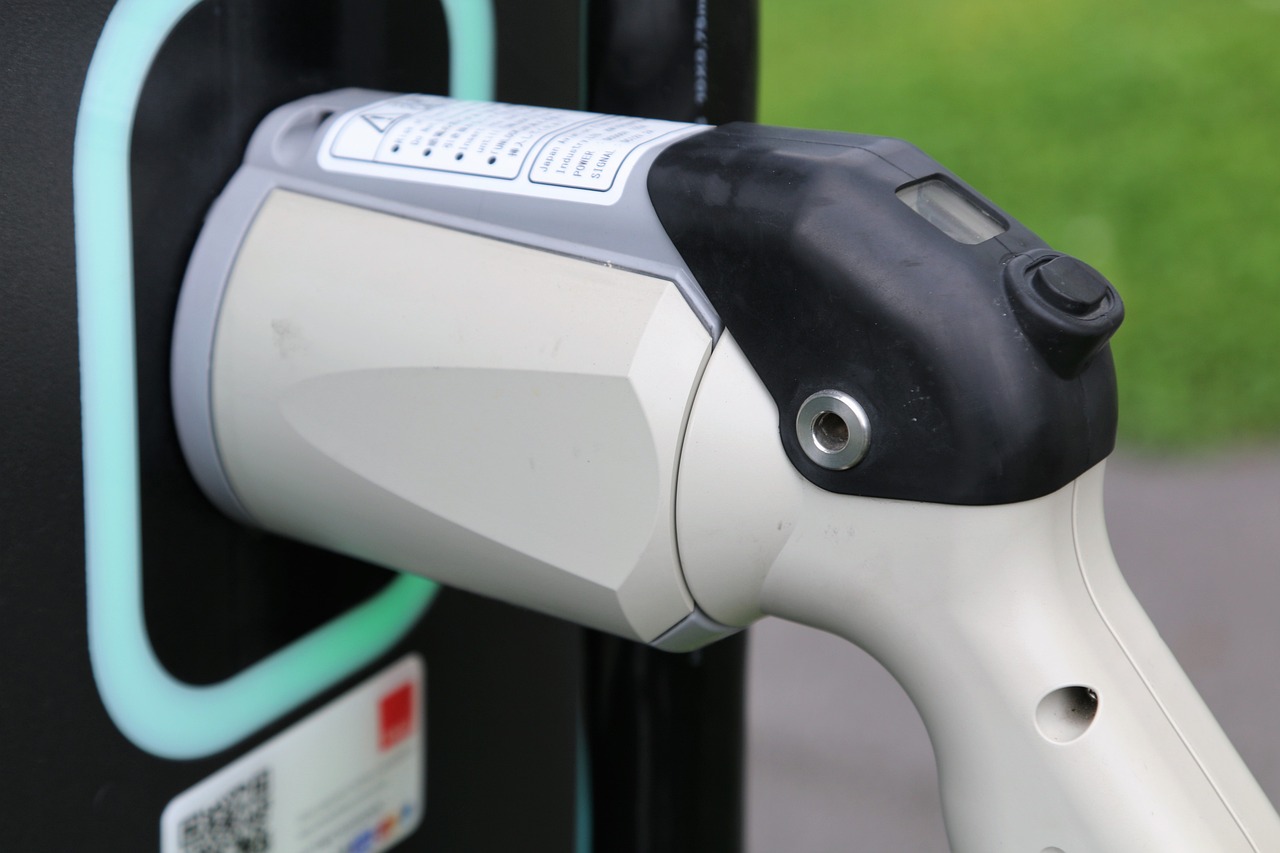
Due to their efficient chemical composition, LiFePO4 batteries offer a fast and convenient charging process. LiFePO4 batteries have higher voltage and lower internal resistance than other types of batteries, making them capable of delivering higher currents for short periods of time. This makes them ideal for applications that require frequent recharging, such as electric vehicles or portable electronics.
Furthermore, they are designed with a built-in protection circuit to prevent overcharging or undercharging, ensuring the user enjoys optimal performance and reliability when charging. Additionally, the discharge rate is also faster than other types of rechargeable batteries as well as offering higher energy efficiency while discharging.
These features make LiFePO4 batteries perfect for applications where quick charging is desirable without compromising quality or longevity.
(7) Discharge depth
The lifepo4 battery depth of discharge (DOD) refers to the amount of electricity drawn from a fully charged battery before it needs to be recharged.
As a lithium-ion battery, LiFePO4 offers superior depth of discharge compared to other types of rechargeable batteries. This means that you can use more energy stored in the battery before needing to recharge it. Many LiFePO4 batteries offer up to 80% depth of discharge, And Harveypower's lifepo4 battery is as high as 90%.
This allows for greater flexibility when using the battery and makes sure that you're getting more out of your energy storage device. When considering safety, LiFePO4's deep discharge capacity is especially important. Not only does this mean you get more usable energy with each charge cycle, but it also ensures that your battery won't be drained too quickly or completely discharged without warning, which could lead to damage or overheating if left unchecked.
Understanding the impact of DOD on lifepo4 batteries can help us better choose and use batteries.
(8) Low self-discharge

Boasting a tremendously low self-discharge rate, LiFePO4 batteries offer the potential to last for extended periods of time without losing their charge. The lowest self-discharge rate is around 1% per month which means that they can hold more than 85% of their capacity for up to 1 year even when stored in normal room temperatures.
Furthermore, these batteries have the ability to rapidly recharge and retain most of their capacity even after repeated cycling or deep discharges. This makes them ideal for use in applications where frequent recharging and discharge cycles are required such as solar energy storage systems and electric vehicles.
Not only do LiFePO4 batteries provide a reliable long-term power source, but they also boast excellent safety features due to their non-toxic chemistry which eliminates the risk of fire or explosion compared with other battery types.
Thus, LiFePO4 batteries are an excellent choice for those who want a safe, reliable, and long-lasting source of power for their needs.
(9) Lightweight
The light weight of LiFePO4 batteries compared to other battery types makes them highly advantageous for applications that require portability and ease of transportation. A comparison between the weights of LiFePO4 and other common battery types can be seen in the following table:
| Battery Type | Weight (kg) |
|---|---|
| LiFePO4 | 0.58-1.8 |
| Lead Acid | 5-30 |
| Ni-Cd | 1-6 |
| NiMH | 0.5-2.5 |
Unlike lead acid batteries, which are very heavy, LiFePO4 batteries are much lighter and easier to transport due to their lower density. This allows for a greater degree of freedom when it comes to powering portable devices, such as laptops or electric bikes. Additionally, they have a long cycle life and high specific energy densities, making them ideal for renewable energy storage systems and electric vehicles due to their lightweight and efficient operation.
(10) Environmental friendly

Offering an environmentally friendly solution, LiFePO4 batteries have minimal adverse effects on the environment when compared to other battery types.
Unlike lead-acid and nickel-cadmium batteries, LiFePO4 batteries do not contain any toxic heavy metals or acids, making them far less hazardous for landfills and recycling centers.
Additionally, due to their higher energy density and lighter weight, fewer raw materials are used in the production of a LiFePO4 battery than its counterparts.
Furthermore, because of their long life cycle of up to 3000 cycles, these batteries require fewer replacements over time; this reduces waste from discarded products that may end up in landfills.
LiFePO4 batteries also offer renewable energy solutions with reduced carbon emissions.
By utilizing wind power or solar power as sources of charge rather than relying on traditional electrical grids fed by fossil fuel-burning plants helps reduce overall global emissions.
Such renewable energy solutions can be implemented more easily with the use of LiFePO4 technology due to its lightweight and efficiency in electricity storage when compared to other battery types.
Consequently, this provides a cleaner option for consumers who are looking for an environmentally conscious choice when it comes to powering their devices.
Lithium iron Phosphate Battery Disadvantages
Despite their longevity and advantages, lithium iron phosphate batteries have some notable drawbacks. One of the main drawbacks is that LiFePO4 batteries can be quite expensive to purchase compared to other types of rechargeable batteries, such as lead-acid or nickel-metal hydride.
Furthermore, LiFePO4 batteries are sensitive to temperature extremes and require careful monitoring when exposed to temperatures below zero degrees Celsius or above 40 degrees Celsius. If the battery temperature rises too high it may become unstable and cause the cell to vent gas or even catch fire.
Finally, while these batteries are known for their durability and long lifespans, they don't perform well under heavy load conditions where currents exceed 10C rates as this will reduce their lifespan significantly.
Therefore, care should be taken to choose suitable charging parameters and avoid deep discharge cycles if possible if one wishes to get the most out of these types of cells.
Lifepo4 Battery Applications
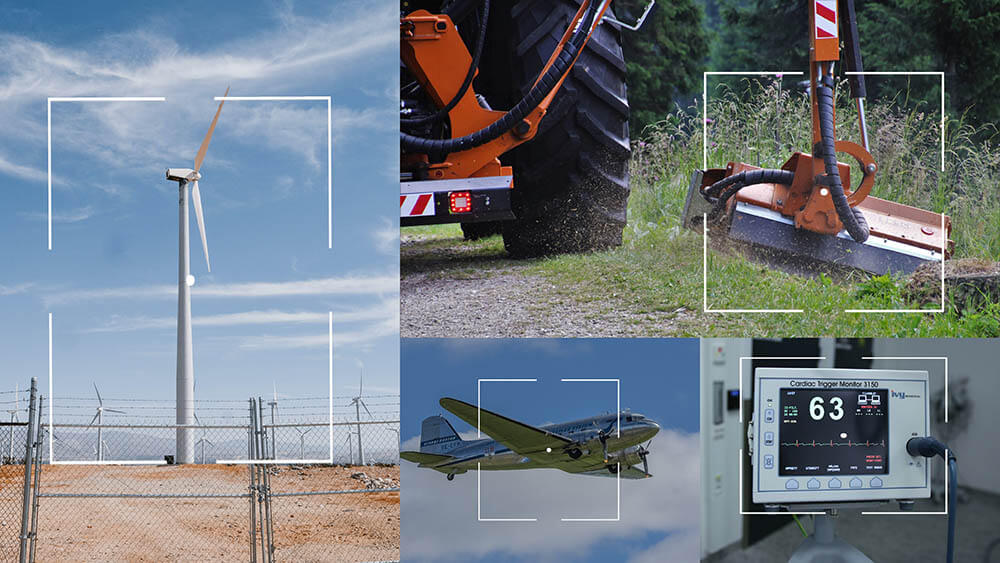
Lithium iron phosphate batteries have excellent performance and safety. From consumer electronics to electric vehicles, as they become more and more popular in people's lives, the lifepo4 battery applications can be divided into four main categories:
- Automotive: Lifepo4 batteries are ideal for use in automotive applications due to their high power density, long life cycle, low self-discharge rate and excellent safety record. They are used in various types of electric cars, such as hybrid electric vehicles (HEVs), plug-in hybrid electric vehicles (PHEVs), all-electric vehicles (AEVs) and fuel cell electric vehicles (FCEVs).
- Portable Electronics: Lifepo4 batteries are also used extensively in portable electronics such as smartphones, laptops, tablets and digital cameras due to their lightweight and long life cycle. In addition they offer higher energy densities than traditional lead-acid or nickel-based batteries.
- Renewable Energy Storage: As renewable energy becomes more prevalent around the world, lifepo4 batteries provide an efficient way to store excess energy produced by solar panels or wind turbines for later use when there is no direct sunlight or wind available. This makes them a great choice for off-grid installations or powering remote locations with reliable electricity sources.
- Medical Devices: Lifepo4 batteries are often used in medical devices such as pacemakers due to their excellent safety record compared to other types of rechargeable cells. Additionally, they offer higher specific energies than other chemistries which makes them ideal for powering small medical devices that require frequent recharging without having to be replaced every few months or years like other chemistries would require.
The advantages of lifepo4 batteries make them a perfect choice for many different applications from automotive use right through to powering small medical devices where reliability is paramount they provide consistent output with minimal maintenance required over time making them an attractive solution both economically and environmentally speaking too!
Comparing LiFePO4 to Other Battery Types
When considering different types of batteries, it is important to compare the advantages and disadvantages of LiFePO4 batteries with those of other battery types.
(1) Lifepo4 battery vs lithium-ion
| Performance Indicator | LiFePO4 Battery | Lithium-ion Battery |
|---|---|---|
| Cycle Life | Up to 3,000 - 5,000 cycles | Up to 500 - 1,000 cycles |
| Energy Density | 130-160 Wh/kg) | 150-200 Wh/kg |
| Power Density | 100-300 W/kg | 150-350 W/kg |
| Cost | Higher | Lower |
| Chemical Substances | Iron, phosphate, and lithium. | Cobalt, nickel, manganese, and lithium. |
| Safety | High | Low, need to prevent thermal runaway events |
| Environmental Protection | No harmful heavy metals or toxic substances | Contains harmful substances such as cobalt |
| Applicable Temperature | -20°C to 60°C | -10°C to 60°C |
Usage Suggestions:
- LiFePO4 batteries are recommended for applications that prioritize long cycle life, such as electric vehicles, renewable energy storage, and backup power systems.
- Lithium batteries are well-suited for applications requiring high energy and power densities, such as portable electronics, drones, and electric tools.
- Consider the cost implications and specific energy/power requirements when choosing lithium batteries or lifepo4 batteries.
- Both batteries have a wide applicable temperature range, but Lithium batteries may perform better in extreme temperature conditions.
(2) Lifepo4 battery vs lead-acid
| Performance Indicator | LiFePO4 Battery | Lead Acid Battery |
|---|---|---|
| Cycle Life | Up to 3,000 - 5,000 cycles | Typically 300 - 500 cycles |
| Energy Density | 130-160 Wh/kg | 30-40 Wh/kg |
| Power Density | 100-300 W/kg | 180-260 W/kg |
| Cost | Higher | Lower |
| Chemical Substances | Iron, phosphate, and lithium | Lead, sulfuric acid, and other chemicals |
| Safety | High | Moderate, need to prevent hydrogen gas release |
| Environmental Protection | Environmentally friendly | Contains lead, a toxic heavy metal |
| Applicable Temperature | -20°C to 60°C | -20°C to 50°C |
Usage Suggestions:
- LiFePO4 batteries are recommended for applications that require long-lasting performance and higher energy density, such as electric vehicles, solar energy storage systems, and off-grid power solutions.
- Lead Acid batteries are still widely used in applications where cost is a significant factor, such as uninterruptible power supply (UPS) systems, backup power for telecommunications, and forklifts.
- Consider the trade-offs between cycle life, energy density, safety, and environmental impact when choosing between LiFePO4 and Lead Acid batteries.
- LiFePO4 batteries are suitable for a wide temperature range, while Lead Acid batteries perform better in moderate temperature conditions.
(3) Lifepo4 vs gel battery
| Performance Indicator | LiFePO4 Battery | GEL Battery |
|---|---|---|
| Cycle Life | Up to 3,000 - 5,000 cycles | Approximately 500 - 800 cycles |
| Energy Density | 130-160 Wh/kg | 80-110 Wh/kg |
| Power Density | 100-300W/kg | 30-50 W/kg |
| Cost | Higher | Moderate |
| Chemical Substances | Iron, phosphate, and lithium | Sulfuric acid and silica gel |
| Safety | High | High, but minimal risk of leakage |
| Environmental Protection | Environmentally friendly | Environmentally friendly |
| Applicable Temperature | -20°C to 60°C | -15°C to 50°C |
Usage Suggestions:
- LiFePO4 batteries are recommended for applications that require long cycle life, higher energy density, and moderate power density, such as electric vehicles, renewable energy storage systems, and marine applications.
- GEL batteries are suitable for applications that require moderate energy and power density, along with a lower cost, such as backup power systems, small-scale renewable energy storage, and telecommunications.
- Consider the trade-offs between cycle life, energy density, and cost when choosing between LiFePO4 and GEL batteries.
- LiFePO4 batteries have a wider applicable temperature range, while GEL batteries perform better in moderate temperature conditions.
(4) Lifepo4 battery vs AGM battery
| Performance Indicator | LiFePO4 Battery | AGM Battery |
|---|---|---|
| Cycle Life | Up to 3,000 - 5,000 cycles | Typically 200 - 500 cycles |
| Energy Density | 130-160 Wh/kg | 30-50 Wh/kg |
| Power Density | 100-300 W/kg | 20-40 W/kg |
| Cost | Higher | Moderate |
| Chemical Substances | Iron, phosphate, and lithium | Sulfuric acid and lead |
| Safety | High | Moderate, need to prevent hydrogen gas release |
| Environmental Protection | Environmentally friendly | Contain lead, a toxic heavy metal |
| requires careful disposal | ||
| Applicable Temperature | -20°C to 60°C | -20°C to 50°C |
Usage Suggestions:
- LiFePO4 batteries are recommended for applications that require long cycle life, higher energy density, and moderate power density, such as electric vehicles, renewable energy storage systems, and off-grid power solutions.
- AGM batteries are suitable for applications that require moderate energy and power density, along with a lower cost, such as small-scale solar energy storage, backup power systems, and marine applications.
- Consider the trade-offs between cycle life, energy density, and cost when choosing between LiFePO4 and AGM batteries.
- LiFePO4 batteries have a wider applicable temperature range, while AGM batteries perform better in moderate temperature conditions.
(5) Ternary lithium battery vs lifepo4 battery
| Performance Indicator | LiFePO4 Battery | Lithium Ternary Battery |
|---|---|---|
| Cycle Life | Up to 3,000 - 5,000 cycles | Up to 500 - 1,000 cycles |
| Energy Density | 130-160 Wh/kg | 180-240 Wh/kg |
| Power Density | 100-300 W/kg | 200-400 W/kg |
| Cost | Higher | Moderate to high |
| Chemical Substances | Iron, phosphate, and lithium | Nickel, cobalt, manganese, and lithium |
| Safety | High | Moderate, need to prevent thermal runaway |
| Environmental Protection | Environmentally friendly | Contains harmful substances such as cobalt |
| Applicable Temperature | -20°C to 60°C | -10°C to 60°C |
Usage Suggestions:
LiFePO4 batteries are recommended for applications that require long cycle life, moderate energy density, and moderate power density, such as electric vehicles, solar energy storage systems, and portable power solutions.
Ternary Lithium batteries are suitable for applications that prioritize high energy density and power density, such as consumer electronics, electric tools, and high-performance electric vehicles.
Consider the trade-offs between cycle life, energy density, power density, safety, and cost when choosing between LiFePO4 and Ternary Lithium batteries.
LiFePO4 batteries have a wider applicable temperature range, while Ternary Lithium batteries perform better in moderate temperature conditions.
(6) LiFePO4 battery vs liPo
| Performance Indicator | LiFePO4 Battery | Li-Po Battery |
|---|---|---|
| Cycle Life | Up to 3,000 - 5,000 cycles | Typically 300 - 500 cycles |
| Energy Density | 130-160 Wh/kg | 150-200 Wh/kg |
| Power Density | 100-300 W/kg | 150-300 W/kg |
| Cost | Higher | Moderate to high |
| Chemical Substances | Iron, phosphate, and lithium | Various lithium compounds |
| Safety | High | Low, need to prevent thermal runaway |
| Environmental Protection | Environmentally friendly | Bad |
| Applicable Temperature | -20°C to 60°C | -20°C to 60°C |
Usage Suggestions:
- LiFePO4 batteries are recommended for applications that prioritize long cycle life, moderate energy density, and safety, such as electric vehicles, solar energy storage systems, and backup power solutions.
- Li-Po batteries are suitable for applications that require high energy density and power density in a lightweight form factor, such as consumer electronics, drones, and radio-controlled models.
- Consider the trade-offs between cycle life, energy density, power density, safety, and cost when choosing between LiFePO4 and Li-Po batteries.
- LiFePO4 batteries have a wider applicable temperature range, while Li-Po batteries perform well within a moderate temperature range.
Choosing the Best LiFePO4 Battery for Your Project
Are you tired of constantly replacing batteries and searching for a reliable energy storage solution? Look no further! Harveypower - A Chinese lifepo4 battery manufacturer, presents its revolutionary lifepo4 battery pack, engineered to redefine your energy needs. With our CATL brand cells, renowned for their unmatched quality, we bring you a power-packed performance that is second to none.
Imagine a battery that outlasts the competition. Harveypower batteries offer an incredible cycle life of up to 8000 times, ensuring sustained power for years to come. Say goodbye to frequent replacements and hello to a hassle-free experience.
Compatibility matters, and we understand that. Our lifepo4 battery pack is compatible with over 30 inverter brands (such as Growatt, DEYE), making it the perfect choice for seamless integration with your existing system. Experience the freedom to choose without compromising on performance.
Need more power? No problem! With Harveypower, you can connect up to 15 sets of lifepo4 battery packs in series, delivering an amplified energy solution tailored to your specific requirements. Unleash the potential of your energy storage system with ease.
At Harveypower, we stand behind the quality of our products. That's why we offer an impressive 12-year warranty on our lifepo4 battery packs. We believe in the longevity and reliability of our batteries, ensuring your peace of mind for years to come.
Our most popular 48V lifepo4 battery has a variety of installation forms to choose from: lifepo4 server rack battery, powerwall, stackable battery, floor-standing battery, all in one battery with inverter.
Among them, the parameter of 24V 200Ah is the best solar energy storage battery choice for most families.
Choose Harveypower, and experience the future of energy storage. Don't settle for anything less than the best. Power up your life with Harveypower batteries today!
Other Functions: Lifepo4 Battery Heater
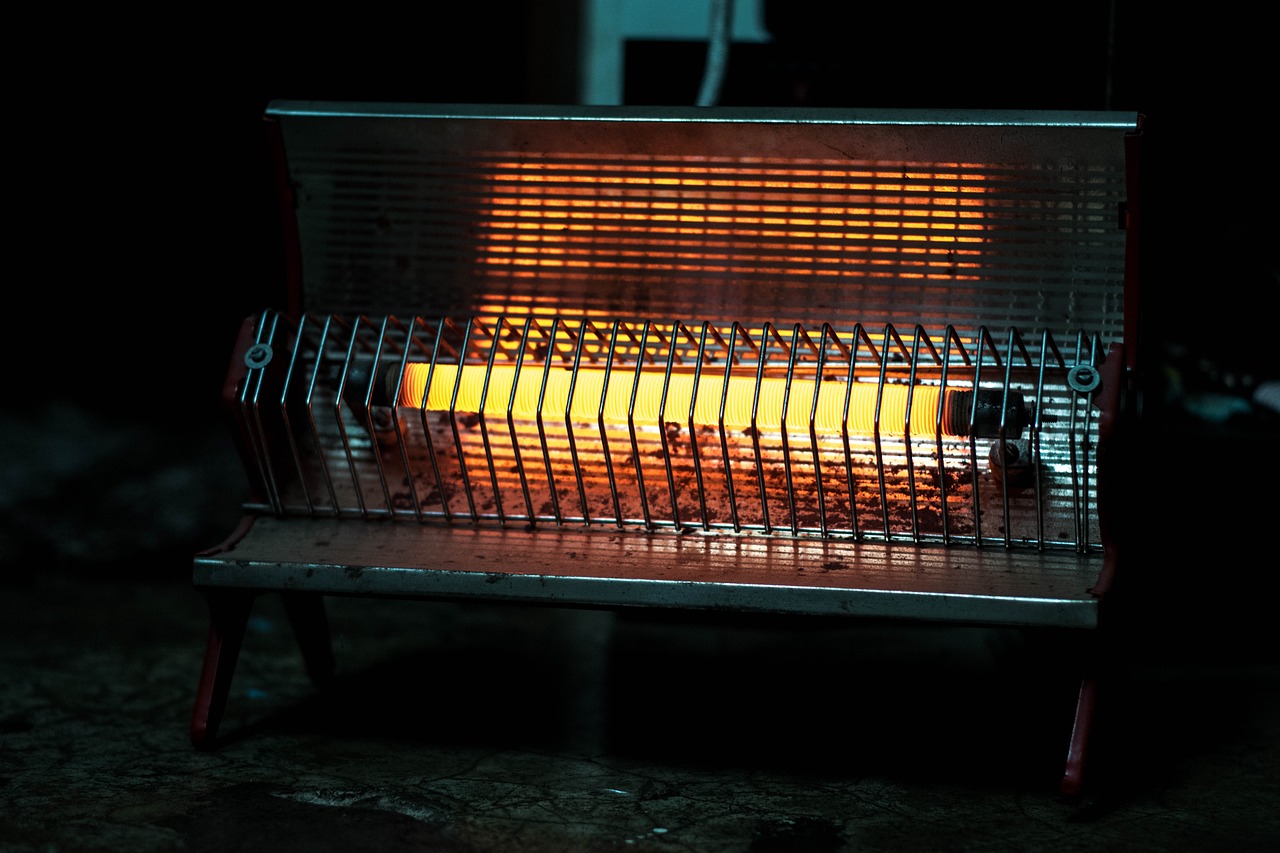
LiFePO4 battery heaters are an essential part of many energy systems. A typical LiFePO4 battery heater consists of heating elements that are powered by either electricity or gas as well as insulation material like glass wool or ceramic fiber sheets which helps retain heat effectively. Additionally, some models may include fans and temperature sensors to help regulate airflow and prevent overheating.
So when building a LiFePO4 battery heater, it's important to assess these components carefully so that it meets safety requirements before use.
When it comes to types of LiFePO4 battery heaters, there is no one-size-fits-all solution; instead, each situation requires careful selection depending on the application and environment in which it will operate. For example, if you're using a large number of batteries then you'll want a larger model with multiple heating elements for greater efficiency; conversely, smaller projects may only require one or two heating elements for less intensive applications such as charging small electronic devices.
Furthermore, some models offer additional features such as variable wattage control or adjustable thermostatic settings these options should also be taken into consideration when deciding upon the best model for your needs.
Other Functions: Lifepo4 Battery BMS system

You've maybe heard of BMS - it stands for Battery Management System, and it's essential to the successful use of LiFePO4 batteries. A BMS is a system that monitors and regulates the charging and discharging of a battery in order to maximize its performance and life. It provides protection against overcharging, over-discharge, short circuits, temperature rise, and other potential issues that could damage the battery or cause injury to people.
The benefits of a BMS include:
- Improved performance - By monitoring voltage levels and temperatures, a BMS can ensure optimal storage conditions for maximum battery efficiency.
- Better safety - By monitoring parameters like current flow or temperature changes, a BMS can provide early warning signs if something is amiss with the battery pack, increasing the chances of avoiding costly repairs or dangerous situations.
- Enhanced longevity - With proper management from a BMS, LiFePO4 batteries can last up to twice as long as non-managed batteries.
- Convenience - A BMS simplifies the entire process by providing an automated system that eliminates most manual interventions in maintaining your battery pack.
What about the Lifepo4 battery without BMS?
Without a Battery Management System (BMS), the use of LiFePO4 batteries is potentially risky and should be weighed carefully. LiFePO4 cells are considered to be one of the most reliable types of rechargeable lithium-ion batteries available today. However, the lack of a BMS can lead to several issues such as overcharging and over-discharging, both of which can cause permanent damage to the battery and reduce its lifespan. Additionally, without a BMS, it is difficult to monitor individual cell voltages and prevent imbalances that could lead to serious safety concerns in certain applications.
The table below summarizes some key points related to using LiFePO4 batteries without BMS:
| Pros | Cons |
|---|---|
| Can be cheaper than buying with BMS | Increased risk for overcharging/over-discharging |
| Simpler installation process due to fewer components involved | Potentially dangerous if cell voltages become unbalanced |
| Longer cycle life compared to other chemistries | Reduced capacity from not being able to monitor each cell accurately |
Although LiFePO4 batteries offer excellent performance on their own, taking the extra step of adding a BMS provides added protection against potential hazards associated with overcharging or over-discharging. Ultimately, it is important for users who choose not to use a BMS with their LiFePO4 battery packs do so only after carefully considering the risks involved.
How to choose the lifepo4 BMS?
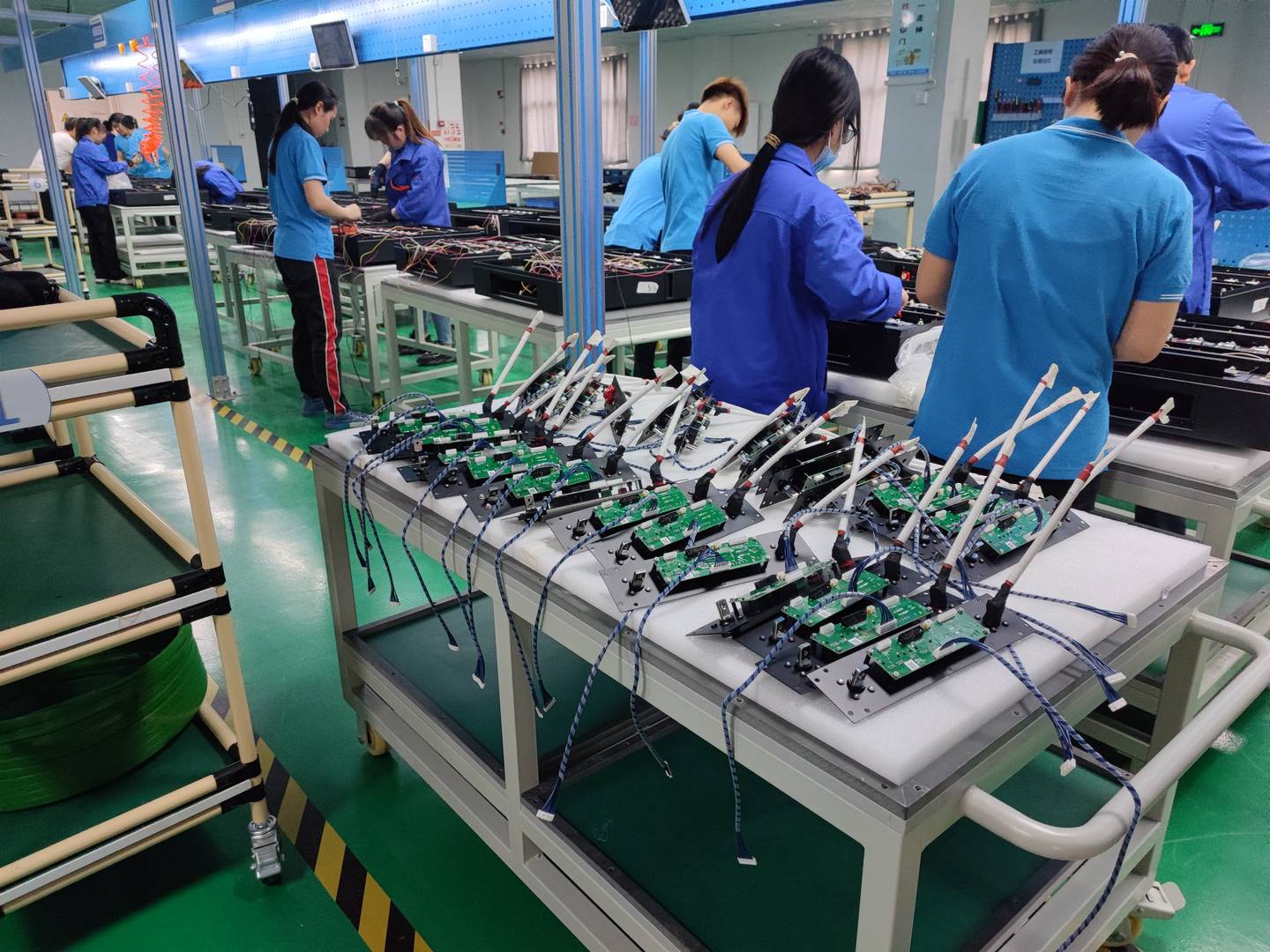
Choosing the right Battery Management System (BMS) is an important decision for anyone looking to maximize the performance of their Lithium-Ion battery. A well-designed BMS can be a key factor in ensuring that your LiFePO4 batteries remain safe and reliable over time.
So when making your choice, you need to consider things like battery capacity requirements, cell voltage, balancing capabilities, quality assurance, warranty and after-sales service, etc.
At the end of the day, I recommend taking a holistic approach when selecting a Lifepo4 BMS. Think about how it'll fit into your current setup and lifestyle: What kind of performance do you need? How much flexibility would be ideal? Can you afford extra features if necessary?
By keeping these guidelines in mind while shopping around for your next Lifepo4 BMS, I'm confident you'll make the best possible decision for yourself or your business.
BMS failure problems & solutions
The utilization of Lithium Iron Phosphate (Lifepo4) batteries in a variety of applications has become increasingly popular due to their long lifespan, high efficiency, and low-cost production. While these battery systems typically employ a battery management system (BMS) to monitor performance and prevent overcharging or discharging, sometimes the BMS also be failed.
Common BMS failure problems include:
| Common Failures | Solution |
|---|---|
| Overvoltage Protection Failure | Check the charging voltage and adjust if necessary. If the problem persists, replace the faulty overvoltage protection circuit or module. |
| Undervoltage Protection Failure | Check the battery voltage and charging parameters. If the voltage falls below the specified threshold, investigate and address the cause. Replace the faulty undervoltage protection circuit or module if needed. |
| Overcurrent Protection Failure | Inspect the load and check for any short circuits or excessive current draw. If necessary, replace the faulty overcurrent protection circuit or module. |
| Temperature Monitoring Failure | Verify the temperature sensor readings and ensure they are within the acceptable range. If the sensor is faulty, replace it. If the BMS is not responding to temperature changes, check the connection and wiring. |
| Cell Balancing Failure | Check the cell balancing circuit or module for any faults. Verify the balance voltage thresholds and adjust if needed. Replace any defective components. |
| Communication Error | Verify the communication wiring and connections between the BMS and the monitoring system. If necessary, troubleshoot or replace the faulty communication module or cable. |
| Insufficient Battery Protection | Evaluate the protection settings and ensure they are properly configured for the LiFePO4 battery chemistry. Adjust the protection parameters if necessary. |
| Battery Pack Overheating | Assess the cooling system and ensure proper airflow. Check for any obstructions or malfunctioning fans. If necessary, improve the cooling system or implement thermal protection measures. |
| Voltage Measurement Inaccuracy | Calibrate the voltage measurement circuit or module. Verify the accuracy using a calibrated voltage reference. Replace any faulty components if required. |
| State of Charge Calculation Error | Recalibrate the State of Charge (SOC) calculation algorithm. Verify the accuracy using reliable SOC estimation methods. If the issue persists, check for sensor or measurement errors. |
It's important to ensure that your Lifepo4 battery BMS is properly installed with good quality connections and components, regularly maintained for cleanliness and performance checks, and equipped with adequate cooling systems for optimal performance.
Doing so will help prevent costly repairs down the line and keep you safe from any potential risks associated with faulty batteries or bad management systems!
Read more about BMS's common failures and solutions.
Mastering lifepo4 BMS reset

To sum up, we know the importance of BMS to lifepo4 batteries and the problems that may arise during use. I know that getting your battery management system (BMS) back on track may be a difficult and arduous task, and Resetting your BMS is a common means of maintenance.
mastering the advanced technique of resetting a Lifepo4 Battery Management System (BMS) can help ensure the optimal performance and longevity of battery systems.
When discussing the Lifepo4 BMS Reset Step, we must first understand what exactly needs to happen for a successful reset process. To begin, all wiring should be checked for accuracy; any discrepancies or issues identified should be addressed prior to moving forward with the rest of the reset process. Once everything is connected accurately, then it’s time to clear out residual information stored in the system. Doing this will ensure no errors are left behind that could prevent new settings from being applied during the reset stage.
Finally, once these two steps have been completed successfully, then you may move on to programming new settings into the system according to manufacturer specifications. This includes setting any thresholds desired such as charge current levels or low voltage cut-offs etc. Then test each feature one at a time until they all function appropriately before finally powering up your device powered by Lifepo4 batteries and enjoying its full capability once more!
Maintenance and Longevity of LiFePO4 Batteries

Adopting an appropriate maintenance regime is essential for ensuring the longevity of LiFePO4 batteries. To maximize the lifespan and performance of these batteries, users should:
- Monitor and balance their cells regularly
- Store them at optimal temperatures between 10°C-45°C
- Keep them in a charged state when not in use
The regular monitoring and balancing of cells help to ensure that each cell within a battery pack functions equally. This is especially important if multiple parallel strings are used to create a larger capacity battery. Unbalanced cell voltages can increase internal resistance, leading to decreased performance and cell damage.
Regularly charging the LiFePO4 batteries also helps maintain their health; failure to charge often enough may lead to permanent sulfation, resulting in a reduced capacity or total failure of the cell or battery pack.
As with any electrochemical system, temperature affects longevity when it comes to LiFePO4 batteries. Storing these batteries at temperatures too high will cause accelerated aging while low temperatures may result in sluggish performance or even permanent damage due to the crystallization of electrolytes inside the cells.
Therefore, it is advisable that users store their LiFePO4 batteries at optimal temperatures between 10°C-45°C, depending on environmental conditions and application requirements.
Conclusion
In conclusion, LiFePO4 batteries are a great choice for energy storage due to their advantages and numerous applications. Did you know that LiFePO4 batteries can last up to twice as long as other types of lithium-ion batteries? This makes them an ideal option for many applications ranging from electric vehicles to solar energy storage systems.
To get the most out of your LiFePO4 battery, make sure you choose the right battery for your project, understand its components and maintenance requirements, and maintain it properly. With proper care, these reliable and efficient batteries can power projects for years to come
Frequently Asked Questions

1. How to measure the lifepo4 battery internal resistance?
The most common approach used to measure lifepo4 battery internal resistance is by using an ohmmeter, which measures electrical resistance in ohms. Connecting two probes to the terminals of the battery, allows a current to flow through it.
Another way to measure lifepo4 batteries is with an Impedance Analyzer, which measures impedance rather than resistance. This method employs a four-terminal technique that involves applying an alternating current signal between two terminals while measuring the voltage between two other terminals.
2. How long do Lifepo4 batteries last?
Lifepo4 batteries can last from 10 to 20 years, depending on usage and care. we can ensure safety by regularly checking battery charge levels and keeping them away from extreme temperatures. With proper maintenance, these batteries can offer a reliable source of energy for many years.
3. Are Lifepo4 batteries safe to use?
Yes, lifepo4 batteries are safe. Like a sturdy fortress, these batteries are built to last and offer reliable power in even the most challenging conditions. With their superior energy density, they provide ample protection for your electronics without increasing weight or size. Plus, they're easy to use!
4. Are Lifepo4 batteries recyclable?
Yes, LiFePO4 batteries are recyclable. They can be recycled to recover valuable metals and other components for reuse in new batteries or other products. LiFePO4 cells must be properly sorted and separated before recycling to ensure the highest yield of usable materials.
5. What is the best way to store Lifepo4 batteries?
Securely storing lifepo4 batteries is paramount for preserving power. Proper packing, avoiding extreme temperatures and shielding from vibration ensures their longevity. Keeping them charged between 40-80% capacity will help them stay healthy and ready for use.
6. How do I know which Lifepo4 battery is right for my project?
To determine the right lifepo4 battery for my project, I need to consider factors like capacity, discharge rate, and voltage. Safety is key; research recommended charging practices and making sure the battery has a reliable safety circuit. Ensure it will fit in my device's space too.
7. How do I charge a Lifepo4 battery?
Charging a LiFePO4 battery requires special charging equipment and techniques to ensure safety and maximize performance. A charger specifically designed for LiFePO4 batteries should be used, as it offers more control over the charging process than generic chargers. To reduce the risk of damage, the voltage should not exceed 3.6V per cell during charging
8. What is the maximum charge and discharge rate of a Lifepo4 battery?
Lifepo4 batteries have a maximum charge and discharge rate of up to 4C, meaning that in 1 hour it can be charged up to 4 times its capacity and discharged at the same rate. This makes them particularly ideal for quick charging applications.
